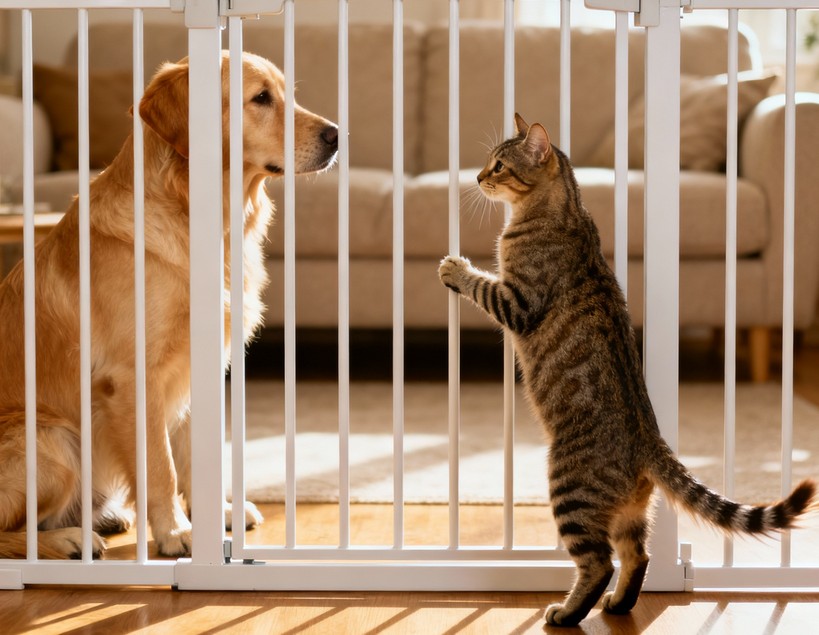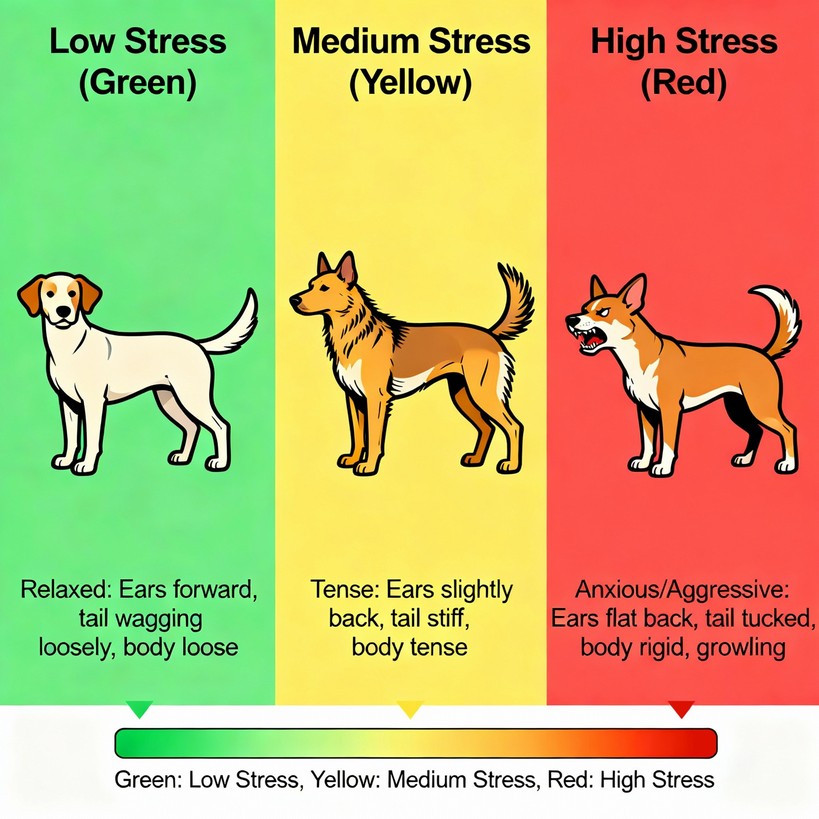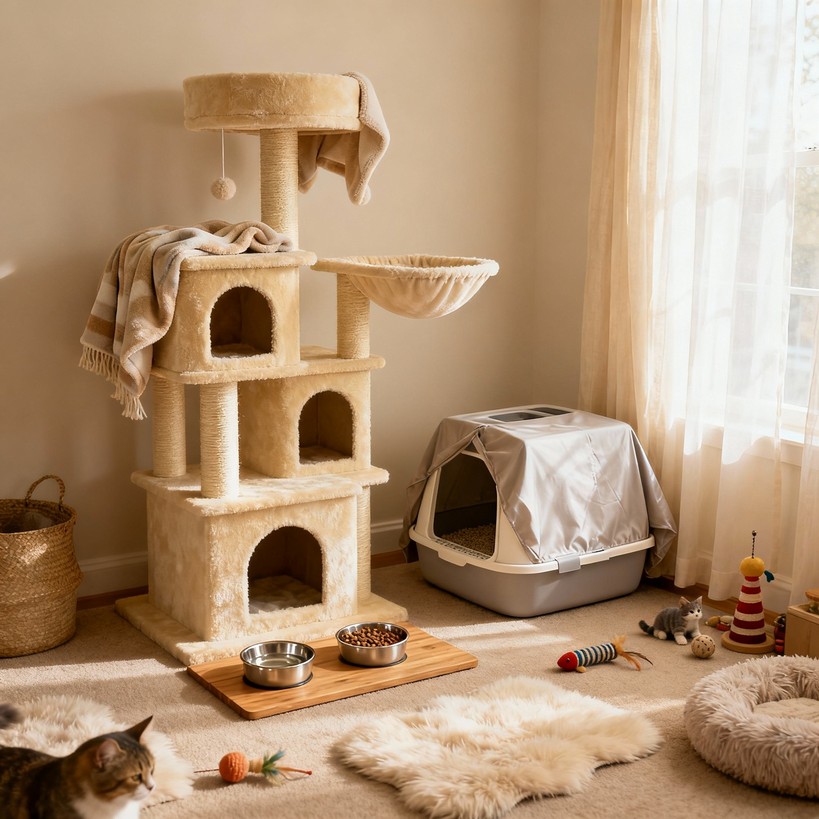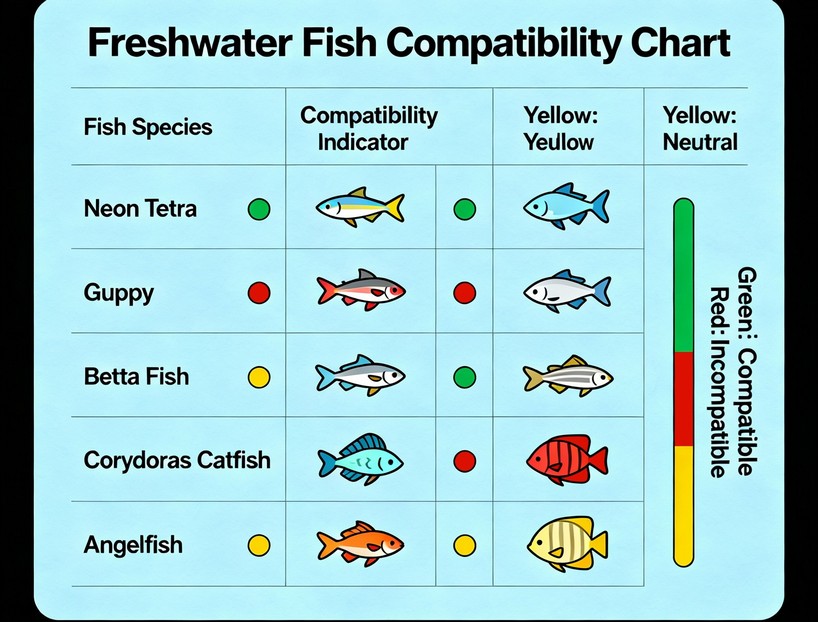So, you are a pet lover and want to extend your family of furry and finned friends. That is indeed exciting. But, let us be honest. Introducing new pets to your home can become quite overwhelming. What if they don’t get along? What if your current pet gets jealous?
Don’t worry. Take a deep breath – Dreamy Mammals understands this and that is why we thought of sharing a few insights into how to create a peaceful multi-pet home. Whether you’re introducing a new cat to a dog, planning some new fish tank mates, or dreaming of that perfect multi-pet household, I’ll walk you through everything you need to know to make it happen smoothly.
Why does Pet Introduction Matter so Much?
Would you let a stranger you met at a party become your best friend right away? Well, pet introductions are same. Your pets need time to adjust, just like we do when meeting new people.
Look at it from your pet’s perspective. Dogs live in packs. They understand and respect the hierarchy in a household. Cats, on the other hand, are highly territorial. For them, the changes need to be introduced gradually. If you are an aquarist, for fish – it is all about space and water balance.
Once you learn these traits, introducing pets to one another should no longer be a problem.
Before You Begin the Journey – The Preparations
Before you begin introducing the pets to one another, a few preparatory steps should be necessary.
- Baby gates or screen doors
- Separate food/water bowls
- Extra litter boxes (cats)
- High-value treats for positive reinforcement
- Quarantine tank setup (fish)
- Emergency vet contact information
Health first
I will term the health checkups to be the “introductory passports” for the pets. Get a clean bill from a vet. Of course, the veterinary visits are never fun, but they are extremely crucial.
New pets need a quarantine period too – usually 3-7 days minimum. The American Animal Hospital Association recommends minimum quarantine periods to protect both new and existing pets from infectious diseases. I get it, you’re excited to have everyone meet, but this waiting period prevents disease transmission and helps stress levels settle down. Your future self (and your pets) will thank you for the patience.
The American Veterinary Medical Association emphasizes the importance of health screenings before pet introductions to prevent disease transmission and behavioral complications.
Create safe places
Every pet needs its own space. It should have a place that it can retreat to when it begins to feel overwhelming. For cats, this might mean a cozy cat tree or high perch where they can survey their kingdom. Dogs often appreciate a quiet corner with their favorite bed. Fish need plenty of hiding spots and territorial markers in their aquarium.
Always keep these escape routes for your pets ready.
Also read – 7 Common Household Items Toxic to Pets
Introducing Dog to a Cat – Step by Step Introduction
That should be the toughest tasks – bringing a cat to a dog household or vice versa. Just like we use social media, animals use scent to know about each other. The first week should be ideally spent letting the pets understand each other through scent.
According to ASPCA animal behavior experts, scent-based introductions significantly reduce stress and improve long-term success rates in multi-pet households.
Week 1
Set up your cat’s “basecamp” in a separate room with everything they need – food, water, litter box, toys, and cozy hiding spots. This room becomes their temporary sanctuary.
Play the scent swap game twice daily by trading bedding and toys between your pets. Feed them on opposite sides of a closed door so they start associating each other’s smell with good things (like dinner!).
Watch for body language clues during this phase. Relaxed pets will show curiosity without stress signs like excessive panting, hiding, or loss of appetite.
Week 2
Now, let the two animals say Hello to each other through a gate. You can use screen doors or baby gates to let the dog and cat have eye contact. You can consider it to be the second step after social media introduction – something quite akin to a Video call!

Here are a few warning signs for stress in a dog –
- Stiff staring at the cat (not good)
- Raised hackles or rigid posture (time to take a break)
- Excessive drooling when food isn’t involved
- Lip licking or yawning when not tired (stress signals)
A cat will show the following signs –
-
Flattened ears and dilated pupils
-
Hissing or swatting motions
-
Hiding or backing away from the gate
-
Over-grooming or appetite changes

When you notice these things, you need not panic or give up. Slow things down and give your new pets enough time to know each other.
- Persistent aggression after 4+ weeks
- Physical injuries to any pet
- Complete appetite loss lasting 24+ hours
- Extreme hiding/withdrawal from family
- Elimination problems continuing beyond adjustment period
*Seek professional help immediately if these occur*
Week 3
This stage involves the final introduction. Once the two pets are comfortable with eye contact, they can be taken to the next stage – face-to-face introduction under supervision.
Have two people present – one for each pet. Keep your dog on a loose leash (just in case!) and let your cat roam freely with escape routes available.
Start with short 5-minute sessions and gradually increase the time. Bring treats and reward calm, friendly behavior from both sides.
Remember, some pets click immediately while others need weeks or even months to become comfortable. Every animal is different, and that’s totally normal!
Professional guidance: Contact certified animal behaviorists if you notice persistent fear or aggression after 4-6 weeks
When Two Cats Meet- The Fight for Territories
Cats are more territorial than dogs. But don’t worry – with the right approach, even the pickiest cats can learn to coexist!
Let each of the cats to have their own basecamp. Let the basecamp have human scent. This becomes their initial territory where they can feel secure while getting used to the house sounds and smells.

Stock this room with:
-
Multiple scent soakers like beds and blankets
-
Elevated hiding spots and perches
-
Separate food and water stations
-
Interactive toys for mental stimulation
The next step is Site Swapping. This can be both fun and difficult one. Rotate the cats to each other’s rooms. This will introduce them to each other without meeting face to face.
Daily rotations between the basecamp and main house help them get familiar with each other’s scents naturally.
Think of it as letting them read each other’s diaries before the first date!
The Fish Introduction
Adding new fish to your tank is like introducing new roommates to a carefully balanced household. Get it right, and everyone lives in harmony. Rush it, and you might have underwater drama on your hands!
Understand the fish compatibility
Not every species of fish can be compatible with every other tank mate. Check if your fish is compatible with the existing tank mates.
Focus on the following factors –
-
Water requirements (temperature, pH, hardness)
-
Swimming territories (who lives where in the tank)
-
Size compatibility (no one should be small enough to become lunch!)
-
Feeding styles and competition levels

Follow the introductory steps gradually –
- Rearrange decorations to eliminate established territories
- Float the bag in your tank for 15-20 minutes to equalize temperature
- Gradually add tank water to the bag over an hour
- Use a net to transfer fish (don’t pour bag water into your tank!)
- Monitor closely for the first 48-72 hours
You may also be interested in Can Betta Fish Live With Angelfish? (Understand Their Behaviour and Best Tankmates)
The Possible Timeline for Pets Introduction
Let’s be realistic about timing expectations:
-
Dog-cat introductions: 2-8 weeks minimum (sometimes longer)
Cat-cat introductions: 3-12 weeks is typical
Fish introductions: 1-4 weeks, including quarantine
Complex multi-species homes: Several months possible
The Bottom Line: Patience Pays Off
Creating a harmonious multi-pet household isn’t about luck – it’s about patience, preparation, and understanding your pets’ unique needs. Yes, it takes time and effort, but watching different species develop comfortable relationships is incredibly rewarding.
Remember, every pet is an individual with their own personality and quirks. What works perfectly for your neighbour’s pets might need tweaking for yours, and that’s completely normal!
Ready to start your pet introduction journey? Take it slow, stay positive, and remember – the best multi-pet homes are built one successful introduction at a time!
(Disclaimer – The information provided in this article is for general educational purposes and does not replace professional veterinary advice. Always consult your veterinarian or a certified animal behaviorist before making decisions about your pets’ health, behavior, or introduction protocols. Individual animals may have unique needs, and professional guidance is essential for addressing specific concerns.)



Add Comment